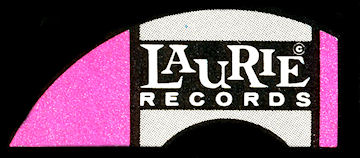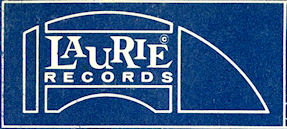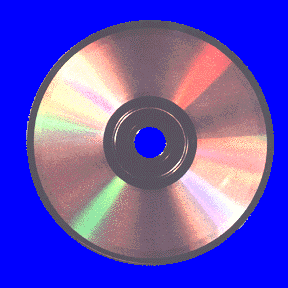 The Laurie Story...
The Laurie Story...Laurie began in New York in March, 1958. It was founded by brothers Bob and Gene Schwartz,
along with Elliott Greenberg and Allan I. Sussel. It was Sussel's daughter (Laura Sue Sussel, who also
lays claim to being the original "Runaround Sue") that lent her nickname, Laurie, for the label. Allan
Sussel left the company in 1960, but the others remained well into the 1980s. Another longtime force in
the company was Ernie Maresca, who wrote many hits for the label. By 2002, Gene Schwartz had
passed away, but Maresca is still involved with music. Allan Sussel died on January 25, 2003, at the age
of 78.
The founders started the label with a fair-sized hit in "I Wonder Why" by Dion & The Belmonts [Laurie
3013]. They tended to have one big act on the label at a time, and as that one would leave, another
would take its place. For 1958-60, it was Dion & The Belmonts, and after they split, Dion was the star in
1961 and 1962. When he left for Columbia in 1963, the Chiffons took over, then Gerry and the
Pacemakers during the British Invasion years of 1964-65. From 1966-68, it was the Royal Guardsmen,
and as they faded, Dion came back with "Abraham Martin and John."
They had a lot of other hits, of course, on both Laurie and their subsidiary label (first called Andie, then
Rust), with artists like The Barbarians, Kenny Chandler, The Mystics, The Passions, Dean & Jean, The
Four Pennies, The Balloon Farm, Randy & The Rainbows, Think, and others. By the 1970s, they were
mostly a reissue label that dealt with record clubs as a main outlet. The 1980s brought a name change
to 3C (Continental Communications Corporation), and in 1987 they began issuing CDs. In the early
1990s, Laurie was bought by EMI-Capitol Music Special Markets.
New stereo is still coming out. As far as stereo goes, almost all their recordings were done on
two-or-more tracks, but for years their albums were mono only. In an interview in 1980 with Gene
Schwartz of Laurie, he told me the following.
Gene Schwartz: "The first stereo recordings we did were on two-track. The main reason we
used two-track was not so much for the stereo -- nobody was thinking about stereo back that early -- but
because we could mix down better. We could put the band on one track and the voices on the other,
and we didn't have to worry so much about balancing so exactly in the studio; we could always get a
good balance later. When we first recorded, in mono, everything had to be perfect, every little nuance
in the record had to be planned out, because everything was done live. I used to have to bring a whole
stack of sheets for the session, including one for the engineer. Then I had to stand behind the engineer
and tap him on the back and say, 'Get ready for this, get ready for that.' It was a real horror; we were
recording and mixing at the same time. Two-track gave us much more freedom in the studio.
"In the beginning, we recorded at Columbia a lot, and then we used RCA most of the time until about
1965 or 1966. By that time, the equipment was good at all the studios, but the rooms were different.
Each one had a different sound. For instance, one might be particularly good for a guitar sound.
Columbia had a huge room, like a church, that we used for some of the Dion recordings with the
orchestra. Actually, we recorded in a lot of different places at one time or another.
"Almost all of
our recordings were done in stereo in the sense that they exist on multi-track tape, but since we've only
mixed them in mono, they don't exist on stereo masters. We could go back to the session tapes and
remix them in the studio, but that would be very expensive to do. First, we'd have to find the tapes, and
they're not all here -- some are stored over at RCA. Then we'd have to go into the studio and make sure
the stereo mix was just like the mono mix, or else the stereo versions would sound different. It would
take a lot of studio time and be very expensive, and in the long run, probably not worth it. Our
experience has been that the people buying the records don't care if it's rechanneled stereo or not."
Well, maybe some people don't care, but a lot of us do. Since that talk in 1980, there have been some
major changes in the music industry. Compact discs, introduced in 1983, made deficiencies in the
sources used for reissues painfully clear. In fact, Laurie's first attempts at issuing CDs in the 1987-1988
period used the same sources (often vinyl) that had been used for their LES-4000 series reissues, with
dismal results. First-generation masters and session tapes became in demand for CD reissue. Several
researchers and producers have helped go back into the studio and remix the songs for true stereo from
the original session tapes. The reissue albums by the Ace label in the UK in the mid-1980s, as well as
the CDs reissued in the late 1980s from the Ace masters, have had much to offer in the way of new
stereo. And even in the late 1990s, we finally got "Party Girl" by Bernadette Carroll and "He's So Fine" by
the Chiffons in true stereo. In 2000, "Moulty" by the Barbarians became available in stereo, as well as "A
Question of Temperature" by Balloon Farm. More to come, we hope...
We would appreciate any additions or corrections to this discography. Just send them to us via e-mail. Both Sides Now Publications is an information
web page. We are not a catalog, nor can we provide the records listed below. We have no association
with Laurie Records, which is currently owned by EMI-Capitol Records Group. Should you be interested
in acquiring albums listed in this discography (which are all out of print), we suggest you see our Frequently Asked Questions page and follow the
instructions found there. This story and discography are copyright 1997, 1999, 2002, 2009 by Mike
Callahan.
 On to the Laurie Discography, Part 1
LLP-1000, LLP-2000, LC-5000 Series (1958-1975)
On to the Laurie Discography, Part 1
LLP-1000, LLP-2000, LC-5000 Series (1958-1975) On to the Laurie Discography, Part 2 LES-4000
Series (1971-1990)
On to the Laurie Discography, Part 2 LES-4000
Series (1971-1990)
 On to the Laurie Discography, Part 3: Miscellaneous Series SLP-
6000, SLP-7000, 3CD-100
On to the Laurie Discography, Part 3: Miscellaneous Series SLP-
6000, SLP-7000, 3CD-100
 On to the Laurie Discography, Part 4 Related LP & CD Issues
On to the Laurie Discography, Part 4 Related LP & CD Issues
 Back to the Discography Listings Page
Back to the Discography Listings Page  Back to the Both Sides Now Home Page
Back to the Both Sides Now Home Page